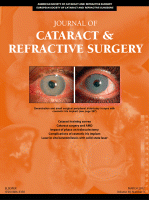L’infezione del bulbo oculare in seguito a intervento di cataratta, l’endoftalmite, rappresenta ancora oggi una delle principali preoccupazioni per questo tipo di chirurgia, poiché può comportare gravissime perdite visive.
In questo poderoso studio viene riportata la casistica su 50,000 interventi consecutivi eseguiti nella clinica di Singapore nel corso di 11 anni.
Lo studio conferma che l’incidenza di tale evento avverso è molto bassa e che la pratica di somministrare antibiotico in sede intracamerulare alla fine dell’intervento ha consentito di portare l’incidenza dallo 0,064% allo 0,01% degli interventi. Con le usuali menovre preventive usualmente utlizzate, quindi, questa complicazione ha colpito 2 occhi su 20,600 operati.
Tan CS, Wong HK, Yang FP
Journal of Cataract & Refractive Surgery
March 2012, Volume 38, Issue 3, Pages 425–430
Study Summary: Tan and coworkers reviewed 50,177 sequential cataract surgeries performed at the Tan Tock Seng Hospital in Singapore during an 11-year period.
They compared endophthalmitis rates before the routine use of intracameral cefazolin injection at the conclusion of cataract surgery with rates during the subsequent period when intracameral cefazolin was routinely administered. Injected eyes received 1.0 mg of cefazolin in a volume of 0.1 mL, injected into the capsular bag at the conclusion of the cataract surgery.
Both the injection and the noninjection groups received subconjunctival gentamicin, 8.0 mg, at the end of the procedure.
The noninjection group (29,539) underwent surgery between 1999 and 2006 and the injection group (20,638) between 2006 and 2010. Most cases (85%) were performed with a clear corneal incision, and the remainder were extracapsular extractions.
The incidence of endophthalmitis was 0.064% (19 cases, predominantly gram-positive organisms) in the noninjected group and 0.01% (2 cases, Pseudomonas aeruginosa and Streptococcus mitis) in the cefazolin-injected group (P = .003).

